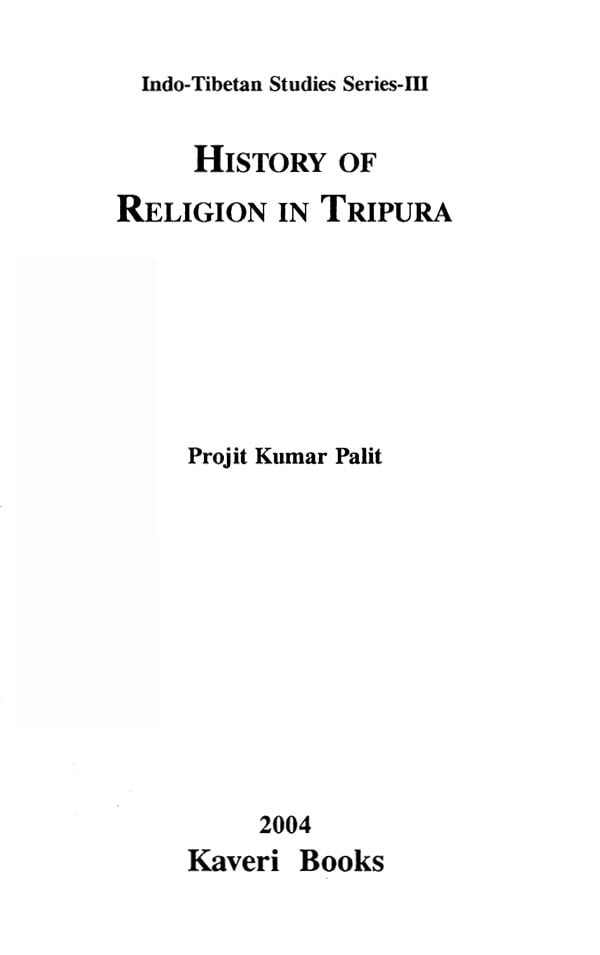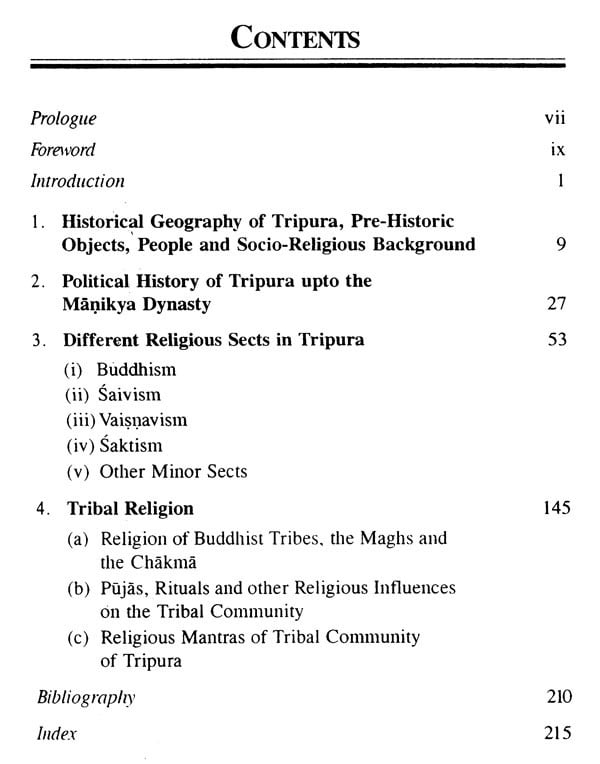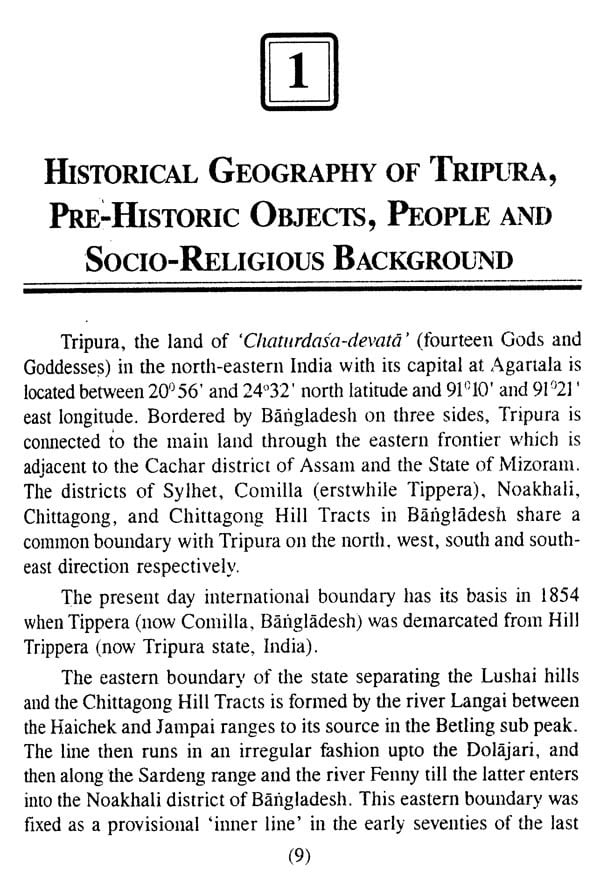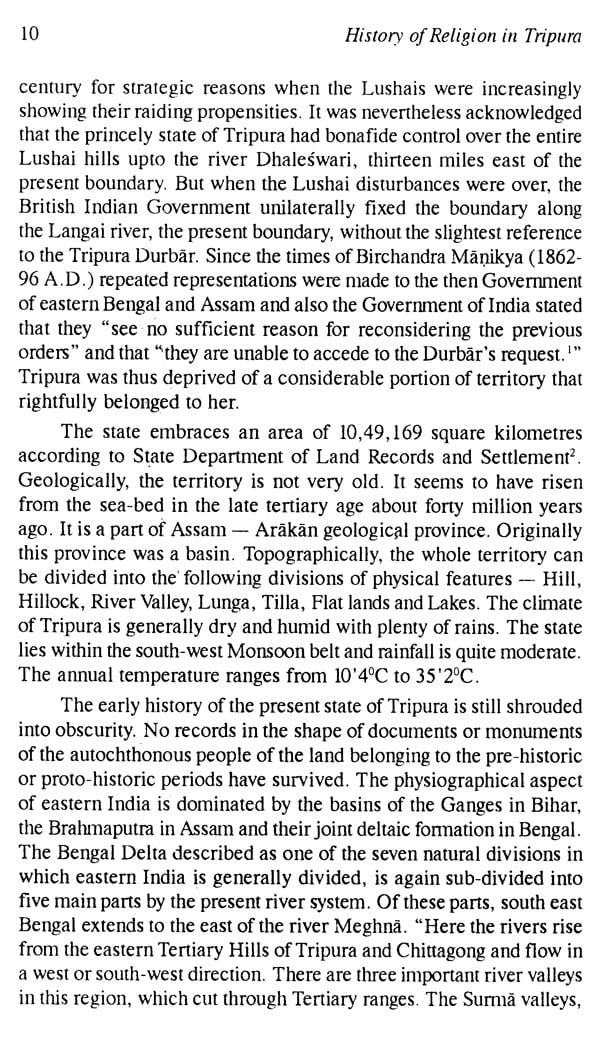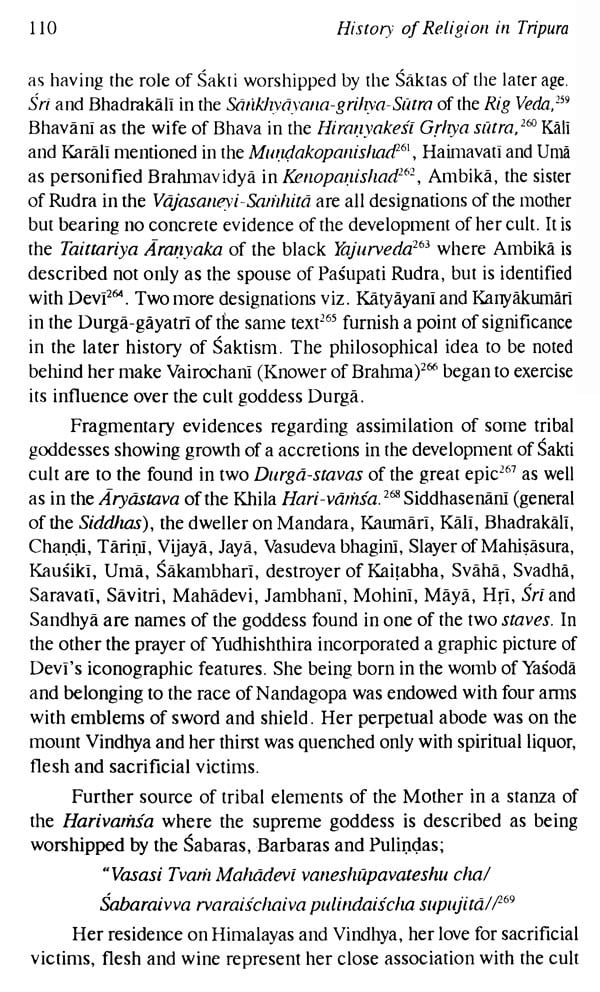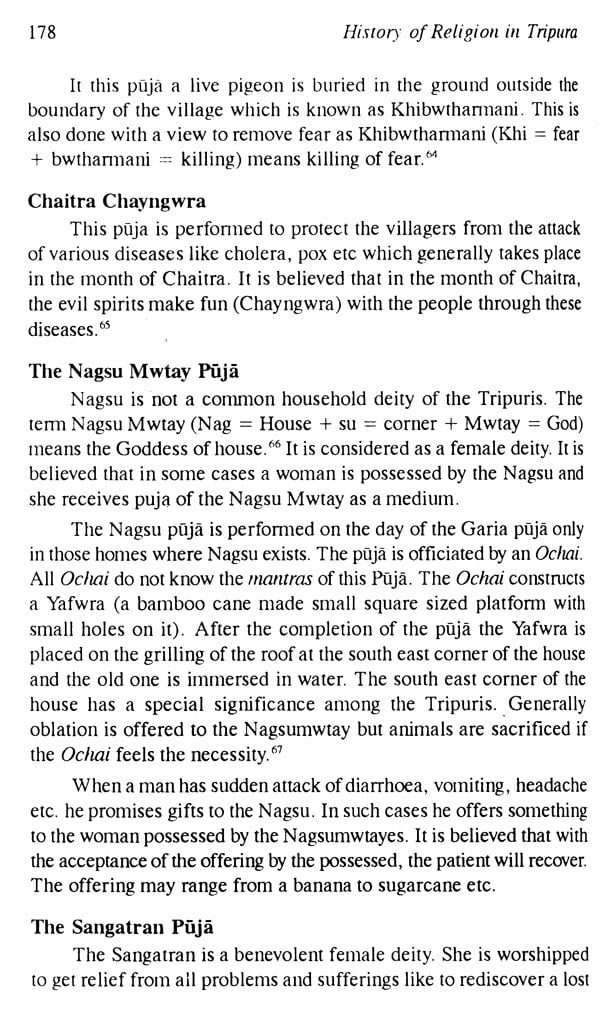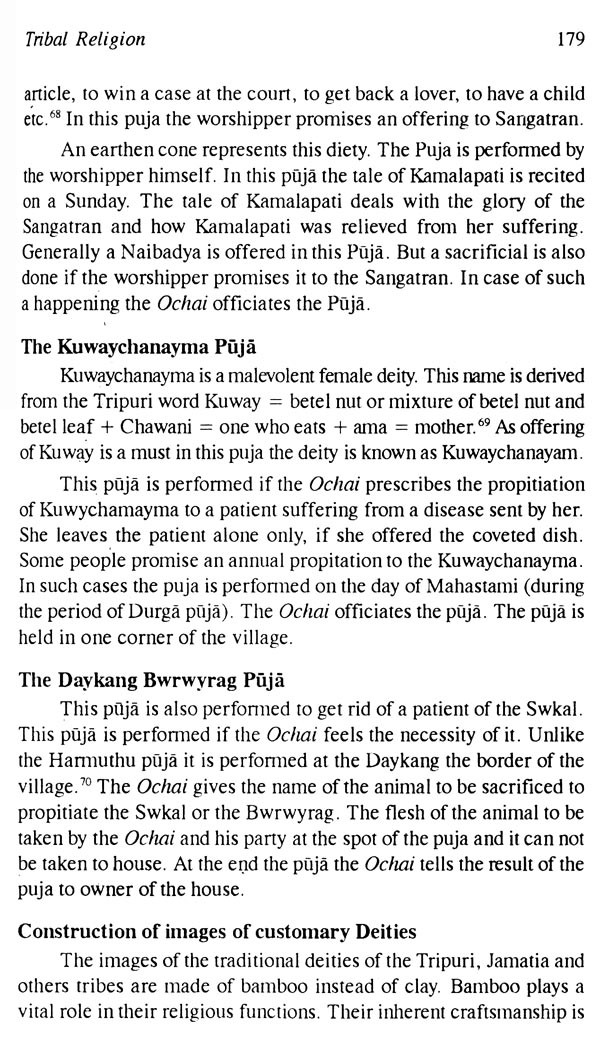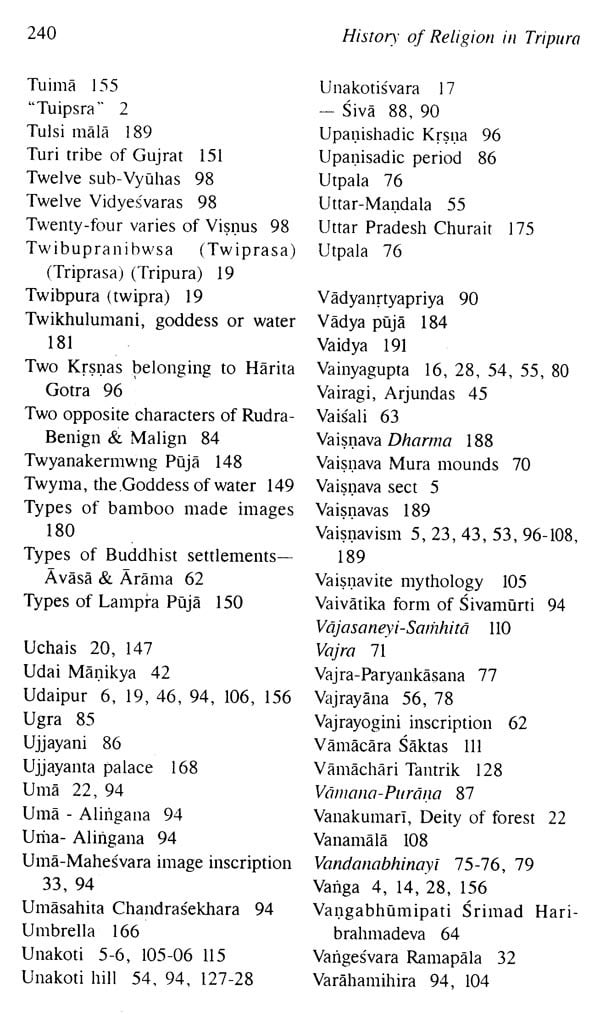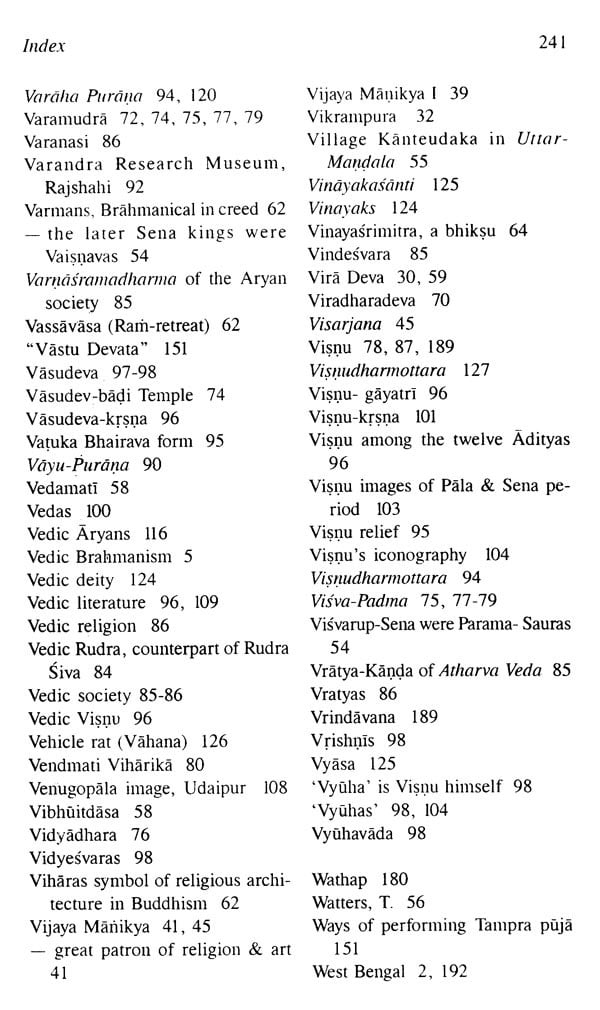About the Book Tripura in the land of 'chaturdasa devata' (fourteen gods and goddesses) in the North-Eastern India, where in diverse civilizations, religions and cultures met in the past. Various religions like Buddhism, Brahmanism and Indigenous Tribal religions are prevalent in different parts of Tripura from very earliest times. Tripura became an important centre of Buddhism from the first decade of 6th century A.D., and Tantric Buddhism flourished from 8th century A.D. onwards, especially with the tribal folks of Maghs and Chakmas. The immigration of plain land people mark the rise of Brahmanism. The religious history of Tripura prior to 12th century A.D. is mixed up with the religious history of ancient Sylhet, Samatata, Noakhali, Chittagong and other neighbouring states of North-Eastern India. Various schools of Hinduism like Saivism, Vaisanavism, Saktism, etc. flourished here with conspicuous regional imprint during the medieval period. Side by side, tribal religion, with its faiths and beliefs, rites and rituals were also prevalent as non Brahmanical religious system in the region. All these played a vital role in building the characteristic features of the religious and cultural aspect of this tiny hilly tract of North-Eastern India.
About the Author Projit Kumar Palit (b. 1967) received his post-graduate degree History, and Archaeology from He specializes in various aspects of North-Eastern Ph.D degree. He had dexterously executed number research projects sponsored by the Asiatic Society Bangladesh; The Ministry Culture, Government of India and Tribal Research Institute, Government Tripura. His various writings have been published several reputed journals both in outside India and has vast experience attending number National and International seminars.
He has worked as Post-doctoral Research Scholar on History of Art Tripura, Ramakrishna Mission Institute Culture, Golpark, Kolkata, and was also associated with editorial work most prestigious publication of Institute, i.e., The Cultural Heritage, Art Vol. VII, and -Modern India, Vol. VIII.
He has wide range of teaching experience and also served as Principal Mohananda B.Ed. College. Presently, he working Lecturer History, the Belonia Government College, Tripura.
Foreword It is that Tripura, Sri Projit Kumar Palit. This covers the from early times to 1775 A.D., which marks practically end the Manikya dynasty when Ralph Leak was appointed the first British Resident Tripperah. Formerly known Hill Tripperah during the British rule, popularly known land Chaturdasa Devata (i.e., fourteen gods goddesses), and has been confluence of diverse religious and cultural traditions with traces Brahmanism of various as also Buddhism indigenous tribal religions. This been substantiated the discovery innumerable archaeological artefacts, sculptural representations, numismatic illustrations.
Buddhism-in particular this region since first decade the sixth century A.D., has been revealed the religious practices of tribals. Since the eighth century Tantric Buddhism, offshoot of Mahayana Buddhism, has become quite popular, especially among the Chakmas and Maghs. immigration people from the plains brought in Brahmanism various shades, thus Saivism, Vaisnavism, Saktism, other minor sects flourished though each invariably a conspicuous regional imprint. The interplay of historical forces during medieval period greatly influenced the literature and traditions. Besides this, the and practices and faiths the flowed down the stream time almost unchanged. These two co-existent streams markedly influenced the culture Tripura.
Introduction Tripura, the land of 'Chaturdasa-devata (fourteen Gods and Goddesses) in the north-eastern India with its capital at Agartala is located between 20°56' and 24°32' north latitude and 91°10' and 91°21' cast longitude measuring 10,477 square kilometres. It is a small state with a population 3191168 of whom 29 per cent belong to the tribal communities. It is bounded in the north, west, south-east by the international boundary of Bangladesh in the present districts of Sylhet, Comilla, Noakhali, Chittagong and Chittagong Hill Tracts. In the east it has a common boundary with the Cachar district of Assam and Mizo district of Mizoram. The geographical continuity with the Indian mainland is maintained only in the north-east by an outlet through Cachar district of Assam. The region is rich in natural resoures and ethnologically interesting as a habitat of several tribal communities such as Tripuris, Riangs, Háláms, Maghs, Jämätias, Chakmäs, etc. The present state of Tripura was known as "Hill Tripperah" in the British period. It was ruled by the lunar dynasty of members with Manikya ending names since the beginning of 15th century A.D. The British Government gave 'Tripura' the status of "Native State" under the general supervision of a Political agent. It merged with India on October 15, 1949 and became a full-fledged state on January 21, 1972.
It is not known how and when this land was named as Tripura.
**Contents and Sample Pages**
